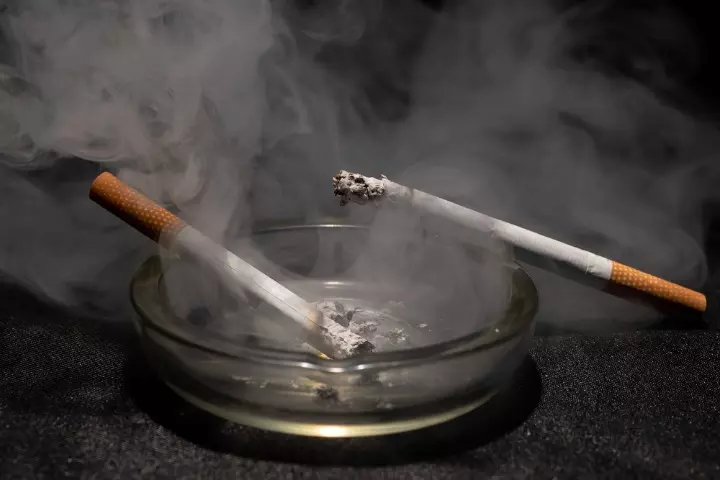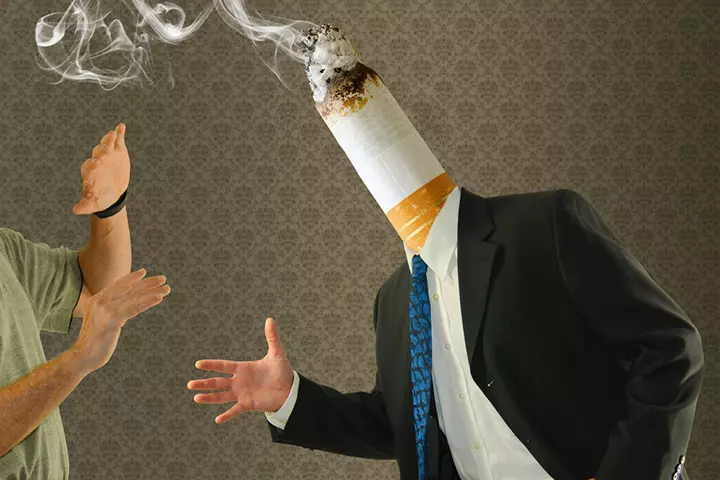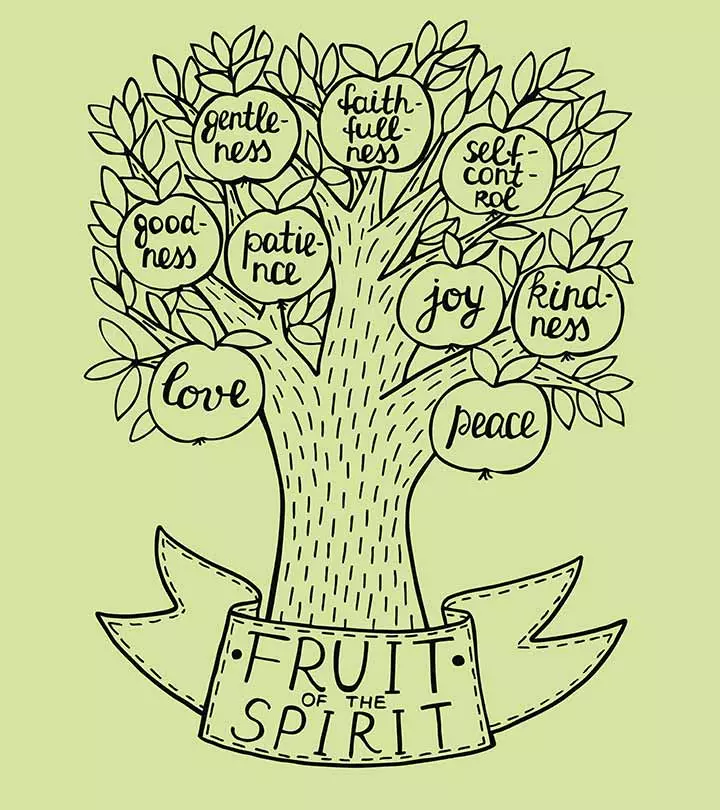
Image: iStock

Smoking is a bad habit, and many fall prey to it without knowing the dangers of it. It is important to introduce smoking facts for kids early on so they can understand the hazards involved and avoid smoking cigarettes in the first place. A smoker is more likely to have a compromised immune system, heart and lung diseases than those who don’t. Sometimes, it even leads to major health complications and even death. Peer pressure often pushes kids to take up smoking in their teen years. And even when they don’t smoke themselves, passive smoking is another deadly habit that they could unknowingly be involved in. To spread more awareness and help the youth make informed decisions, we are here with a list of smoking facts. These facts are interesting, and at the same time, should keep them away from picking it up as a habit.
Key Pointers
- Cigarettes contain poisonous substances such as lead, arsenic, tar, ammonia, and acetone that have the potential to cause cancer.
- Nicotine in cigarettes can lead to physical dependence on the drug.
- Secondhand smoke is equally dangerous and is responsible for over 40,000 deaths annually.
- It is illegal to sell or smoke cigarettes under the age of 12.
- A strong parent-child relationship is associated with a lower likelihood of a child smoking.
Smoking Facts For Kids
1. Do You Know What’s In A Cigarette?
Lead, tar, arsenic, ammonia and acetone are a few of the 600 ingredients found in a cigarette. And when it is burned, it creates more than 70000 chemicals. Around 69 of these chemicals can cause cancer.
2. Smoking Is Poisonous:

Image: Shutterstock
Cigarettes contain thousands of chemicals that don’t just taste horrible, but are poisonous too! The body tries to get rid of the poison by making one sick. That’s why smokers feel sick and dizzy all the time. It is their body trying to protect them.
3. Children Are More Susceptible To Cigarette Advertising And Marketing:
Yes, that’s true! 9 out of 10 young smokers prefer Camel, Newport or Marlboro, the three most heavily advertised brands while just 6 out of 10 smokers aged 26 or more prefer these brands.
A survey conducted in 2012 found that kids were more likely to recall tobacco advertising than adults. Just 1 out of 4 adults in the study remembered seeing a tobacco ad two weeks before the survey, and around 2 out of 4 kids aged 12 to 17 remembered seeing tobacco ads.
A study conducted by the “Journal of the National Cancer Institute” found that teens are more likely to become obsessed with cigarette smoking under peer pressure. Similarly, the Journal of the American Medical Association study found that one-third of underage experimentation with smoking was attributed to the marketing efforts of the tobacco company.
3. It’s Hard To Quit Smoking:
Bad habits do not go quickly; the same holds true for smoking. Cigarettes contain nicotine, an addictive chemical that makes it difficult to stop smoking. When a person tries to quit smoking, nicotine levels drop drastically, making the smoker want more. The body becomes physically dependent on this drug, making it tough to stop smoking. Makarand Karkare, an Indian software engineer, shares how he was smoking 15 cigarettes a day and his journey to quitting it. He says, “In January 2003, Mihir, my son, participated in a half-marathon. I had gone to Cross Maidan to see him off. Looking at the crowd and their enthusiasm, I decided that I would participate in the half-marathon, but I knew it was not possible till I quit smoking…On 11th October 2003, I left for the USA without my carton! I was a little tense. I had not committed to my wife that I was planning to quit, because I had broken that promise so many times earlier. I had confided in Mihir and he told me that he was sure I would kick the habit. When I reached the USA, I made a public announcement that I had quit smoking. And that’s it. I had created a situation for myself where it was impossible to smoke. It was a little difficult in the beginning, but not impossible. After four smoke-free weeks, the momentum just carried me forward. It’s now 7 years without a smoke (i).”
4. It Stinks:
The smoke from the cigarette sticks to the hair and clothes and makes the breath smell horrible. Young adults who smoke do not realize how bad they smell to the other people. It also turns the fingers and teeth yellow, and skin looks unhealthy too!
Besides the bad breath, smoking also irritates the throat and eyes, increases the blood pressure and heart beat, reduces immunity, causes tooth decay and gum diseases.
Smoking is also the biggest cause of COPD (chronic obstructive pulmonary disease). COPD is an umbrella term for a range of conditions like chronic bronchitis and emphysema. It also damages the airways and lungs, leading to long-term medical conditions, which cause the need for oxygen supplementation and multiple medications.
5. Smoking Kills:
Roughly, 1 out of 3 young smokers die prematurely from smoking-caused diseases. Smoking damages the lungs, making it harder for children to run and play with their friends. It also makes a person a lot more likely to suffer from asthma and other respiratory diseases. If the current smoking rate continues, 5.5 million kids alive today will die prematurely from smoking.
 Point to consider
Point to consider6. Patch And Gum Will Increase The Chances Of Quitting:

Image: Shutterstock
Smokers believe that nicotine replacement therapy or NRT like nicotine gum, patches and lozenges are ineffective. But in reality, it can help quit smoking. Even researchers say that NRT can double the possibility of quitting smoking successfully.
7. Smoking Is Expensive:
Approximately, 1.6 million cigarette packets are purchased annually by children. Believe us, kids and adults waste a lot of money in smoking. It is estimated that smoking 20 cigarettes a day for five years would cost £8000.
8. Higher Addiction Rate:
The addiction rate for smoking is much higher than the addiction rate for alcohol, marijuana, or cocaine.
The symptoms of nicotine addiction can occur after weeks or just a few months after the first experimentation with smoking. Since adolescence is a crucial period of growth and development, exposure to nicotine can have an adverse effect on brain development.
9. Time Frame:
The National Institutes of Health in 2012 reported that the most common time frame for experimenting smoking is from 6th to 9th grade. 16 out of 100 high school students, usually of the 9th to 12th grades are current smokers, which includes 15 girls, and around 17 boys out of 100. Just 6% of 8th graders are reported to have their first cigarette before the 6th grade. The research conducted by the “Journal of Adolescent Health” in 2013 found that the peer pressure on smoking was greatest during the middle school years. The peer influence weakens during the transition from medium to high school. But unfortunately, the habit of smoking in most of children continues.
10. Hazards Of Second Hand Smoke:

Image: Shutterstock
Even if one does not smoke, just being around people who smoke can cause health problems. Secondhand smoke is dangerous for people of all ages. It causes more than 41000 deaths every year. Lung cancer and lung infection are the most common health hazards associated with smoking. Other than these itching, reddening, and watering of the eyes, earaches and wheezing are also health effects. Here are a few other pieces of information about smoking and related pollution facts for kids:
In a crowded restaurant, smoking can produce ten times the pollution of a busy highway.
Even pets suffer from secondhand smoke. It can cause enlarged hearts or even leukemia in dogs.
Secondhand smoke fills the air with the same poison found in the air around the toxic waste dumps.
 Quick tip
Quick tip11. Smokeless Tobacco:
You must have heard about smokeless tobacco, a sticky, chewing gum like substance with a tobacco flavor. It’s also called “spit tobacco,” “chewing tobacco” and “snuff.” Most children think that smokeless tobacco does not harm. But that is not true! Eating this stuff can cause mouth ulcers, sores, bleeding gums and even cancer in extreme cases. In addition to these, smokeless tobacco can also cause hiccups, bad breath and staining of the teeth. Isn’t that gross?
12. Social Effects:
According to a study conducted by the Surgeon General, teens who smoke are three times more likely to drink alcohol, 22 times more liable to use cocaine and eight times more likely to smoke marijuana. It is also reported that cigarette smokers are more likely to carry weapons, get into fights, suffer from mental health problems, and attempt suicide.
13. Places Where Smoking Were Banned:
Smoking in public areas and workplaces was banned in Scotland in 2006. A similar law was introduced in Northern Ireland and Wales in England in July 2007 and April 2007. Since the introduction of the smoking ban, there has been a reduction in the effect of passive smoking in England. Results from the Department of Health’s Smoke-free study show a substantial improvement in air quality. The report also showed that the smokers felt more inclined to quit following the ban.
14. Smokers Stick Together:
Kids who smoke are more likely to have friends who smoke. The US Surgeon General opines that it’s the result of both friend selection and socialization. And as mentioned before, children learn about smoking by hanging around with people who smoke. The decision to smoke is reinforced by a desire to be accepted by peers. Kids who smoke tend to make friends with other smokers and even reinforce their decision to smoke.
15. Dangers Of Smoking During Pregnancy:

Image: IStock
Women who smoke during pregnancy have more miscarriages, stillbirths, and premature deliveries than women who do not smoke. It also increases the risk of complications during childbirth and pregnancy, increasing the possibility of SIDS (Sudden Infant Death Syndrome).
16. All Cigarettes Are Deadly:
Most people believe that smoking tobacco with descriptions such as ‘mild’ or ‘light’ is less harmful to health as compared to smoking regular tobacco. But again, that’s not true. The tar and nicotine content of these so-called ‘light’ or ‘mild’ cigarettes is the same as the regular cigarettes and may deliver even more carbon dioxide than regular ones.
17. A Leading Preventable Cause Of Death:
In the United States, more than 480,000 people die of smoking and tobacco consumption and even exposure to second-hand smoke, making it one of the leading preventable causes of death in the country. It means that those who lost their lives due to smoking could live much longer had they not smoked.
18. Parents Can Make a Difference:
Peer pressure can be very stressful, but it cannot outdo the importance of parents. A study by the “Journal of Applied Psychology” discovered the link between parent’s views on tobacco and smoking in children. Surgeon general’s 1994 and 2012 reports cited that lack of parental involvement could pose a significant risk. A higher-quality parent-child relationship defined by factors like involvement, support, and closeness can reduce the chances of smoking.
 Do remember
Do rememberThe number of smokers in the US is reducing each year, so Americans are choosing health over smoking. According to a survey by Gallup, in 1944, 41% of American adults admitted to smoking. In the 1960s, the federal government issued a public warning against the ill effects of smoking. However, the number of smokers in America did not drop until the 1970s. In 1977, the rate of smoking dropped to 36%. This percentage remained stable for years until it started falling again in the late 2000s following public smoking bans in several states. In 2018, the smoking rate declined to its lowest at 16%.

Percentage of smokers in America over the years
Source: In U.S., Smoking Rate Hits New Low at 16%; GallupA Few More Facts

Image: Shutterstock
- Electronic cigarettes are the newest tobacco product in the market, but its safety and potential health consequences are still unknown.
- Cigars have the same health effects as a cigarette, which includes causing cancer.
- 11.5% of high school students turn smokers by the time they leave school.
- With 18%, white high school students have the highest smoking rate, followed by Hispanics (14%) and African-Americans (8.2%).
- The tobacco companies spend $9.6 million people every day to promote their deadly product. That’s around $26 million every day. And much of that marketing strategy directly reaches and influences children.
- Around 1500 kids are killed every year by the fires in the home caused by cigarettes. The tobacco industry even has the science to make self-extinguishing cigarettes, but they never use it.
- Cigarette butts are one of the biggest causes of pollution on the beaches.
- Every day, about 3900 kids between the age 12 and 17 start smoking.
- A survey found that 87% children rated plain packaging as uncool and said that they wouldn’t like to be seen with plain packs of cigarette.
- Not just cigarettes, even hookah smoke has been shown to contain concentrations of toxins like tar, nicotine, carbon monoxide and heavy metals that are as high as or even greater than the cigarette smoke.
- Smoking is illegal until one turns 12 years old and people who buy and sell cigarettes to young people are breaking the law.
- In Canada, cigarette smoking causes around 37,000 deaths each year. In fact, tobacco kills more people in Canada that the deaths caused by suicide, murders, drug abuse and traffic accidents aside.
- A person who smokes dies ten years earlier than a non-smoker.
- Every cigarette that one smokes reduces the expected life span by 11 minutes.
- About 69% of smokers have tried to quit smoking entirely.
- More than 1/3 of the world’s smokers are Chinese. That’s more than the entire population of the United States.
- Over 30% of cancer can be prevented by avoiding alcohol and tobacco.
- The first European who learned to smoke from the natives was arrested because people thought he was possessed by the devil.
- Smoking near Apple computers can void the warranty.
- Hitler led the first anti-smoking campaign in modern history.
- Teen smokers are more likely to have anxiety disorders, panic attacks, and depression.
- Smoking increases the risk of heart attack. The risk is 200 to 400% greater than the non-smokers.
- In 2010, Ardi Rizal, a two-year-old boy from Indonesia, became infamous for smoking 40 cigarettes a day.
- Girls who smoke are a lot more likely to grow excess facial hair.
- Teenagers who smoke have more trouble sleeping than people who do not smoke.
- Smoking makes the hair turn gray faster.
- Parents who smoke are more likely to have children who smoke.
Frequently Asked Questions
1. How should I talk to my kids about smoking?
As soon as your child is about five or six years old, you can talk to them about the ill effects of smoking, such as breathing problems, addiction, and bad breath (1). Have an open and honest conversation and set clear rules and expectations that you don’t want them to smoke a cigarette or any illicit substance. Give your child the freedom to talk openly and express their views about smoking.
2. How can I keep my kids tobacco-free?
According to research, the possibility of tobacco use is less in teens whose parents educate them about the harmful effects of tobacco use compared with those teens whose parents don’t have such discussions with them (2). Make strict no-smoking rules at home and reinforce them with negative consequences. Inform your child about their mental health and issues, such as peer pressure often, and help them develop positive coping strategies (3).
3. How can I encourage my children to engage in healthy activities and hobbies as an alternative to smoking?
Instill healthy habits in kids and educate them about the dangers of smoking. Encourage them to participate in healthy activities like sports, dancing, arts and craft, hobby clubs in school, volunteering, hikes, and competitions that are beneficial for their mind and body. Staying active and engaged in productive endeavors will help children steer clear of smoking.
4. What are some strategies to help my children cope with stress and emotions without turning to tobacco?
One of the ways to help your children is by having open communication with them and being empathetic to them. You may help them with school stress and encourage them to participate in activities and have hobbies. If these tips don’t work, you may take professional help from a counselor to help your child cope with their emotions and stress.
5. How can I help my children understand the marketing tactics used by the tobacco industry?
It is essential to start educating children about the detrimental effects of smoking early on and making them aware of how these products are sold. Provide them with facts and proof about the risks associated. You can make them read informational articles related to smoking so that they are well aware of the marketing tactics that surround them.
Cigarettes are packed with poisonous chemicals that can cause cancers, lung diseases, and other fatal health issues. Remember that prevention is better than cure. Smoking facts for kids help them know why smoking is dangerous to health, and it may prevent them from using cigarettes in adolescence or later. You may teach them that it stinks, and there is a risk of getting addicted to smoking once they begin to smoke. You may also tell them that even exposure to secondary smoke can be hazardous. Educate them about advertisements for cigarettes, and it is shown in television commercials for marketing.
Children are impressionable, making them more likely to pick up bad habits such as smoking. Therefore, making your children aware of smoking and its influence on health is essential. We’ve provided a few facts and statistical data on smoking in the infographic below.
Some thing wrong with infographic shortcode. please verify shortcode syntax
Smoking is bad for your health, wallet, and environment. Cigarettes contain harmful substances that can damage your health irrevocably. Learn 7 reasons why you should be smoke-free and make a positive change in your life.
Personal Experience: Source
MomJunction articles include first-hand experiences to provide you with better insights through real-life narratives. Here are the sources of personal accounts referenced in this article.
i. How I quit smoking continued…https://mkarkare.wordpress.com/2011/01/24/how-i-quit-smoking-continued/
References
- Talking to your child about smoking.
https://medlineplus.gov/ency/patientinstructions/000873.htm - Keeping Your Kids Tobacco-free.
https://www.cancer.org/content/dam/CRC/PDF/Public/8349.00.pdf - How to Keep Kids and Teens from Smoking and Vaping.
https://www.heart.org/en/healthy-living/healthy-lifestyle/quit-smoking-tobacco/how-to-keep-kids-and-teens-from-smoking-and-vaping
Community Experiences
Join the conversation and become a part of our nurturing community! Share your stories, experiences, and insights to connect with fellow parents.
Read full bio of Dr. Anuradha Bansal
Read full bio of Manjiri Kochrekar
Read full bio of Harshita Makvana
Read full bio of Trisha Chakraborty


















